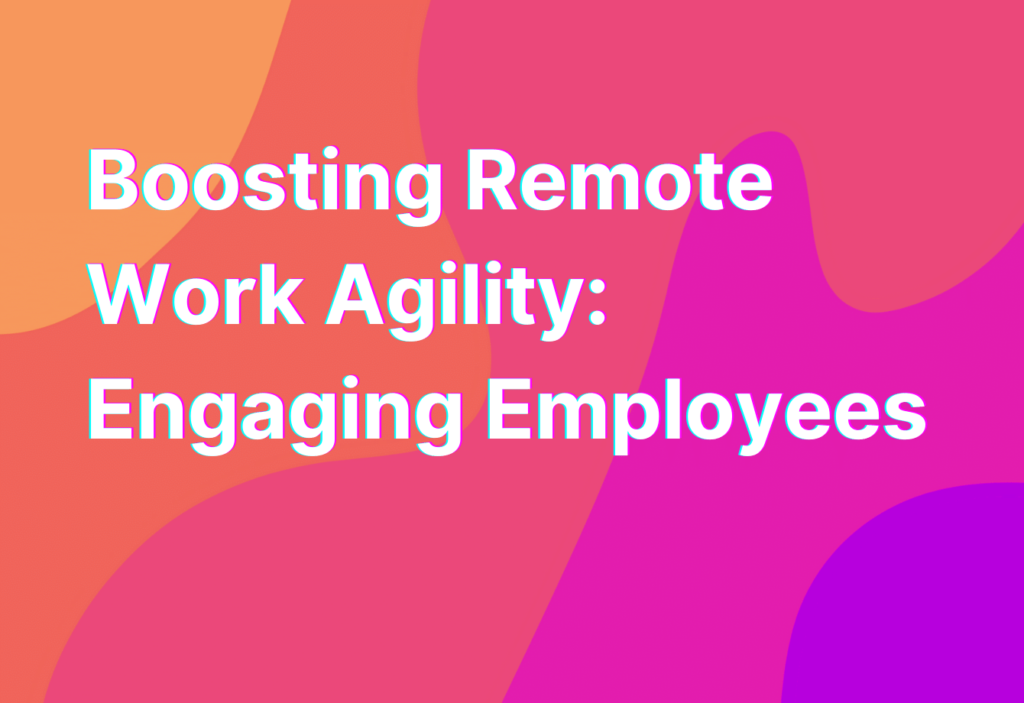Boosting Remote Work Agility: Engaging Employees
Remote work has become increasingly popular in recent years, and for good reason. It offers flexibility, work-life balance, and the ability to work from anywhere in the world. However, with this flexibility comes the need for remote work agility. In order to be successful in a remote work environment, employees must be able to adapt quickly to changing circumstances and stay engaged in their work. In this article, we will explore some strategies for boosting remote work agility and engaging employees.
1. Foster a Culture of Communication
Communication is key in any work environment, but it is especially important in a remote setting. Without face-to-face interactions, it can be easy for employees to feel isolated and disconnected. To combat this, it is important to foster a culture of communication within your remote team.
Encourage regular check-ins and team meetings to keep everyone on the same page. Utilize video conferencing tools to create a more personal connection. And don’t forget to utilize collaboration tools like Trello or Asana to keep everyone organized and accountable.
By fostering a culture of communication, you can ensure that your remote team stays engaged and connected.
2. Provide Opportunities for Skill Development
Remote work offers a unique opportunity for employees to take control of their own professional development. Without the distractions of a traditional office setting, employees can focus on building new skills and expanding their knowledge.
Encourage your remote team to take advantage of online courses, webinars, and other learning opportunities. Provide resources and support for skill development, such as access to industry publications or subscriptions to online learning platforms.
By providing opportunities for skill development, you not only boost the agility of your remote team, but you also show that you value their growth and development.
3. Foster a Sense of Belonging
One of the biggest challenges of remote work is creating a sense of belonging and camaraderie among team members. Without the daily interactions of an office setting, it can be easy for employees to feel disconnected and isolated.
To foster a sense of belonging, consider implementing virtual team-building activities. This could include virtual happy hours, team challenges, or even online games. Encourage employees to share personal updates and photos in a dedicated chat channel or forum.
By fostering a sense of belonging, you can boost employee engagement and create a more cohesive remote team.
4. Encourage Work-Life Balance
One of the biggest advantages of remote work is the ability to achieve a better work-life balance. However, without clear boundaries, it can be easy for work to bleed into personal time, leading to burnout and decreased agility.
Encourage your remote team to set clear boundaries between work and personal life. Encourage them to take breaks, go for walks, and engage in activities that promote well-being. Lead by example and prioritize your own work-life balance.
By encouraging work-life balance, you can help your remote team stay engaged and avoid burnout.
5. Embrace Technology
Technology is the backbone of remote work, and embracing the right tools can greatly enhance agility and engagement. From project management tools to communication platforms, there are countless options available to help remote teams stay connected and productive.
Encourage your remote team to explore different tools and find what works best for them. Provide training and support to ensure that everyone is comfortable using the technology.
By embracing technology, you can boost the agility of your remote team and create a more efficient and engaged workforce.
Wrapping Up
Boosting remote work agility and engaging employees is crucial for success in a remote work environment. By fostering a culture of communication, providing opportunities for skill development, fostering a sense of belonging, encouraging work-life balance, and embracing technology, you can create a remote team that is agile, engaged, and productive.
For more tips on remote work and collaboration skills, check out our article on Collaboration Skills: Remote Employee Engagement.


